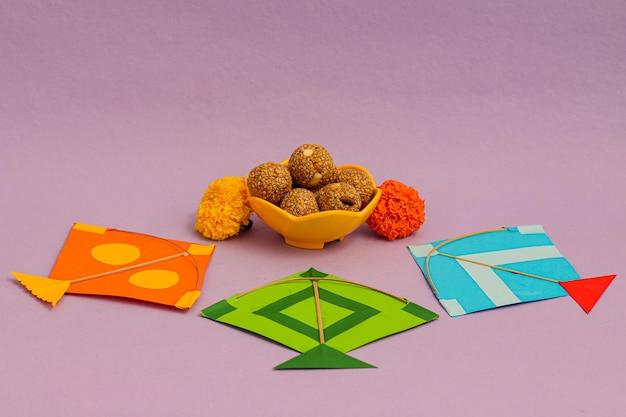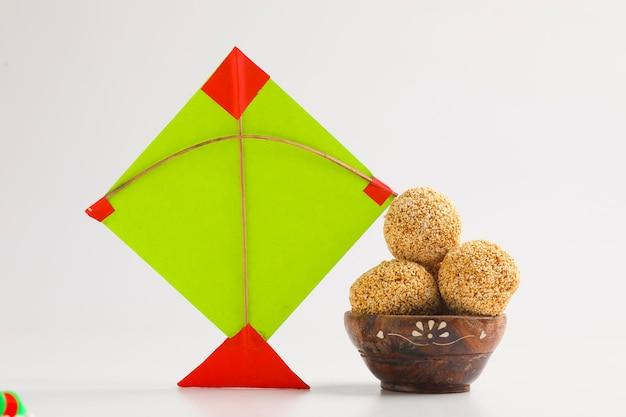New Zealand, known for its majestic landscapes and rich indigenous culture, is home to the Māori people and their beautiful language, te reo Māori. As we explore the depths of this language, we effortlessly stumble upon various phrases and expressions that have intrigued both locals and visitors alike. In this blog post, we’ll delve into the difference between two commonly used Māori phrases, “Ka kite” and “Ka kite ano,” unraveling their meanings and contextual usage.
With the rising interest in Māori language and culture, it’s essential to enhance our understanding of these expressions. Whether you’re planning a trip to Aotearoa (New Zealand) or simply have a fascination with languages, this guide will demystify the significance of “Ka kite” and “Ka kite ano” within Māori culture. Let’s get started on this exciting exploration of the Māori language’s intriguing nuances!

What is the Difference Between Ka kite and Ka kite ano
Have you ever heard someone say “ka kite” or “ka kite ano” and wondered what the difference between the two is? Well, you’re not alone! These phrases are commonly used in the New Zealand Maori language, but they might sound a bit similar to the untrained ear. So, let’s delve into the nuances and unravel the mystery behind these expressions.
Ka kite: The Classic Goodbye
Ka kite is a phrase that is often used as a casual way to say “goodbye” in Maori. It’s like the New Zealand equivalent of “see you later” or “bye” in English. The expression carries a sense of farewell, acknowledging that you will no longer be in the presence of the person you’re speaking to.
Now, you might be wondering, “Why don’t they just say ‘bye’ like the rest of us?” Well, the Maori language is rich in culture and tradition, and ka kite is a way for speakers to honor their heritage and connect with others who share the same linguistic background.
Ka kite ano: The Extra Farewell
If ka kite is the classic goodbye, then ka kite ano is like saying “goodbye, and take care!” It adds a touch of extra sentiment and warmth to the farewell. In English, we might use phrases such as “see you soon” or “take care” to convey a similar feeling.
The inclusion of the word ano at the end of ka kite ano signifies a sense of continued connection, almost like saying “until we meet again.” It’s an expression of genuine well-wishing and demonstrates a desire to see the person being addressed in the future.
So, Why the Difference
The subtle distinction between ka kite and ka kite ano lies in the level of formality and the depth of the farewell. Ka kite is more commonly used in everyday conversations between acquaintances or friends, whereas ka kite ano is often employed when bidding farewell to someone you have a closer relationship with or wish to express a deeper connection to.
Think of it this way: if ka kite ano were a cake, it would have an extra layer of affectionate icing on top!
Wrapping Up
Now that you know the difference between ka kite and ka kite ano, you can confidently bid farewell to your Maori-speaking friends or acquaintances. Whether you opt for the casual goodbye of ka kite or the more heartfelt farewell of ka kite ano, you’ll be able to convey your best wishes with a touch of kiwi charm.
Remember, language is a beautiful tapestry that reflects the expressions and values of different cultures. So, embrace the opportunity to learn and appreciate the nuances of phrases like ka kite and ka kite ano, and let them enrich your linguistic repertoire.
Stay tuned for our next Maori language lesson!

FAQ: What is the difference between Ka kite and Ka kite ano
In this FAQ-style subsection, we will answer some commonly asked questions about the Māori phrases “Ka kite” and “Ka kite ano”. From their meanings and usage to their cultural significance, we’ve got you covered. So, let’s dive in and explore the wonderful world of Māori language expressions!
What is Ka kite bro about
“Ka kite bro” is a popular phrase in New Zealand that reflects the uniqueness of the Māori culture. It is an informal way of saying “goodbye” or “see you later” in te reo Māori. The addition of “bro” at the end adds a friendly touch and is commonly used between close friends or family members.
What is Nga mihi nui
“Nga mihi nui” is a gracious and respectful Māori expression used to show gratitude or convey heartfelt acknowledgments. It can be translated as “many thanks” or “warm greetings” in English. When you want to express sincere appreciation or offer warm wishes, “nga mihi nui” is a wonderful phrase to use.
How do you thank someone in Māori
To express gratitude in Māori, you can use the phrase “kia ora,” which means “hello” or “be well.” Another way is to say “nga mihi” or “nga mihi nui,” both of which convey the meaning of “thank you” or “many thanks” depending on the context. Remember, showing appreciation is an important aspect of Māori culture.
What does ka kite apopo mean
“Ka kite apopo” can be translated as “see you tomorrow” in English. This phrase is a friendly way to bid farewell to someone with the anticipation of meeting again the following day. It reflects the interconnectedness and sense of community deeply embedded in Māori culture.
What is Kei te pai
“Kei te pai” is an expression that conveys a sense of well-being or contentment. It can be translated as “I am fine” or “it is all good” in English. This phrase is often used as a response to inquiries about one’s well-being or to express overall satisfaction with a particular situation.
What is the Māori name for kite
In the Māori language, a kite, the flying object, is called “manu tukutuku”. Kites have a significant cultural symbolism in Māori tradition and are often intricately designed and beautifully crafted.
What does Aroha AHAU ki a koe mean
“Aroha AHAU ki a koe” literally translates to “I love you” in English. This heartfelt expression of love and affection is commonly used between close friends, family members, or romantic partners. The word “aroha” represents the concept of love, empathy, and compassion in Māori culture.
What does Aroha mean to the Māori
“Aroha,” a term deeply rooted in Māori culture, encompasses the concept of love, empathy, and compassion. It extends beyond romantic love and encompasses care, understanding, and goodwill towards others. Aroha is considered a fundamental value and guiding principle in Māori society.
What is the Maori word for grace
The Māori word for grace is “kawenata.” Kawenata reflects notions of elegance, beauty, and gracefulness in various contexts, encompassing both physical and metaphorical aspects. It is an expression of appreciation for the beauty and harmony found in Māori culture.
Why do Kiwis say bro
The use of “bro” is a pervasive and endearing term in New Zealand culture. It is often used as a friendly way to address others, similar to “mate” or “buddy” in other English-speaking countries. In Kiwi culture, “bro” is used to show camaraderie, friendship, and familiarity.
What does Kia Kaha Kia Maia mean
“Kia kaha kia maia” translates to “be strong, be brave” in English. This powerful phrase serves as a source of encouragement and inspiration. It reflects the Māori belief in the importance of resilience, courage, and determination in facing and overcoming challenges.
What is Ka Pai
“Ka pai” is a versatile Māori phrase that can be translated to “good,” “great,” or “well done” in English. It is an expression of approval, satisfaction, or praise. Whether you’re complimenting someone on their achievements or simply acknowledging something positive, “ka pai” is a wonderful phrase to use.
How do you say goodbye in New Zealand
In New Zealand, the Māori phrase “ka kite” is commonly used to say goodbye or see you later. It’s a friendly and informal way to bid farewell. Additionally, “haere rā,” which means “farewell” or “safe travels,” is also used when parting ways.
Does the word Aroha Mai mean
“Aroha mai” is a phrase frequently used to apologize or ask for forgiveness in Māori. It can be translated to “I’m sorry” or “please forgive me” in English. When you realize you’ve made a mistake and want to make amends, using “aroha mai” shows sincerity and a desire to make things right.
What is your name in te reo
To ask someone’s name in te reo Māori, you can use the question “Ko wai tōu ingoa?” It literally translates to “What is your name?” in English. This phrase acknowledges and respects the Māori language and cultural identity of the person you are speaking to.
What does Nau mai Haere Mai mean
“Nau mai Haere Mai” is a warm and inclusive greeting in Māori that translates to “welcome” in English. It is often used to welcome people to a place, event, or gathering. This phrase embodies the Māori value of hospitality and inclusivity, creating an inviting atmosphere.
What does ka kite mean
“Ka kite” is a versatile phrase in Māori that is primarily used to say “see you” or “goodbye.” It can also be an expression of agreement or acknowledgment. This simple yet versatile phrase holds a wealth of cultural significance in Māori language and communication.
How do you say best wishes in Māori
To convey best wishes in Māori, you can use the phrase “nga mihi nui” or “whakamihi.” Both phrases reflect appreciation and express warm wishes for someone’s well-being or success. Whether it’s a birthday, a special occasion, or a gesture of support, these phrases add a personal touch to your wishes.
What does Ka kite ano mean
“Ka kite ano” is an extension of the phrase “ka kite,” which means “see you.” Adding “ano” to the end emphasizes the intention to see someone again. It’s like saying “see you again” or “see you soon” in English. This friendly phrase reflects the Māori value of maintaining connections and is used to express the anticipation of future meetings.
What does Tena koutou katoa mean
“Tena koutou katoa” is a formal Māori greeting used to acknowledge a group of people. This phrase translates to “greetings to you all” in English. It is an inclusive and respectful way to address a gathering or audience, showing respect for individuals as well as the collective.
Why do you say Tena koutou three times
Repeating “Tena koutou” three times, such as “Tena koutou, tena koutou, tena koutou katoa,” emphasizes the respect, inclusiveness, and magnitude of the greeting. It acknowledges the individual, the collective, and the broader community. The repetition highlights the significance of unity and the interconnectedness of everyone present.
What does Kia Kaha mean in NZ
“Kia kaha” is a widely recognized Māori expression that translates to “be strong” or “stay strong” in English. It is often used as a form of encouragement, support, or solidarity. In New Zealand, “kia kaha” has become a symbol of resilience, representing the strength and determination of individuals and communities.
Now that you’ve explored the differences between “Ka kite” and “Ka kite ano” and gained insight into their meanings and usage, you have a better understanding of these Māori phrases. Incorporating these expressions into your interactions and conversations can not only enhance cultural exchange but also foster a greater sense of connection and understanding. So go ahead, embrace the beauty of the Māori language and let these phrases become a part of your linguistic repertoire. Ka kite ano!